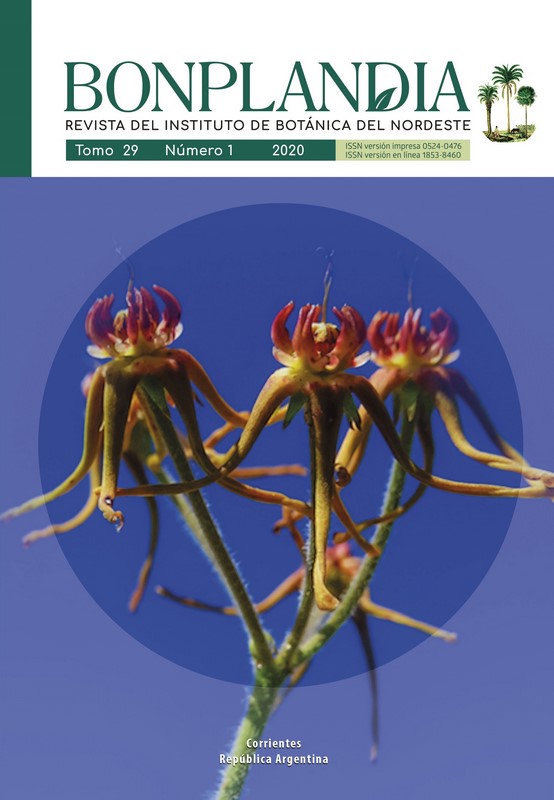Eficiencia reproductiva de las angiospermas de un bosque inundable en la cuenca del lago de Maracaibo (Venezuela)
DOI:
https://doi.org/10.30972/bon.2914107Palabras clave:
Fecundidad relativa, humedales, producción de frutos y semillas, relación fruto/ flor, relación semilla/óvulo.Resumen
La relación fruto/flor, relación semilla/óvulo y fecundidad relativa fueron evaluadas en 25 especies de un bosque inundable en la cuenca del lago de Maracaibo (Venezuela) y correlacionadas con el número y costo de las estructuras reproductivas. Estos estimadores, junto con la biomasa asignada a frutos y semillas y la relación pericarpio/semilla, fueron analizados entre formas de vida, sistemas reproductivos y síndromes de dispersión de semillas. En general, la relación fruto/flor y la fecundidad relativa fueron bajas mientras que la relación semilla/óvulo fue alta. La relación fruto/flor estuvo asociada negativamente con el número de flores por inflorescencia, y al igual que la fecundidad relativa, con el peso del fruto y de la semilla. La relación semilla/óvulo estuvo negativamente relacionada con el número de óvulos por flor y con el peso del fruto. La relación fruto/flor y la fecundidad relativa fueron mayores en especies herbáceas, autógamas y/o de dispersión abiótica que en sus contrapartes leñosas, xenógamas y/o zoocoras las cuales presentaron mayor peso semilla, y en el caso de las especies xenógamas, también mayor relación pericarpio/semilla que las autógamas. La relación semilla/óvulo fue mayor en especies de dispersión abiótica que en las zoocoras. Estos resultados sugieren una fuerte influencia del número y costo de las estructuras reproductivas en la eficiencia reproductiva de las especies.Descargas
Los datos de descargas todavía no están disponibles.
Publicado
2020-02-06
Cómo citar
Barrios, Y., & Ramírez, N. (2020). Eficiencia reproductiva de las angiospermas de un bosque inundable en la cuenca del lago de Maracaibo (Venezuela). Bonplandia, 29(1), 21–38. https://doi.org/10.30972/bon.2914107
Número
Sección
Artículos originales
Licencia
Declaration of Adhesion to Open Access
- All contents of Bonplandia journal are available online, open to all and for free, before they are printed.
Copyright Notice
- Bonplandia magazine allows authors to retain their copyright without restrictions.
- The journal is under a Creative Commons Attribution 4.0 International license.















.jpg)


